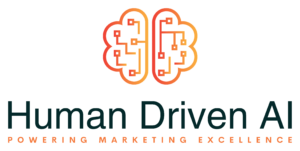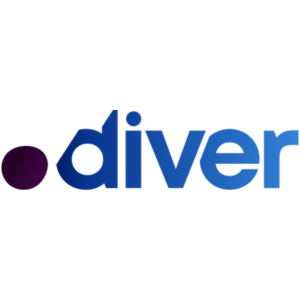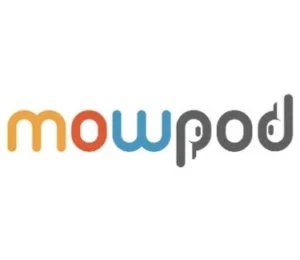Intrinsic branding — Justin Foster & Emily Soccorsy // Root + River
Justin Foster + Emily Soccorsy
Root + River
- Part 1Humanistic marketing & Brand activism — Justin Foster & Emily Soccorsy // Root + River
- Part 2 Intrinsic branding — Justin Foster & Emily Soccorsy // Root + River
Show Notes
Quotes
-
“Intrinsic branding is something that works from the inside out. It means the practice of expressing your brand through your mission, beliefs, and culture. It flies in the face of traditional branding. It is what is within us, who we are at a core level, how do we articulate that and in a way that is differentiated, have those conversations with each other and in the market. It is working from the interior out to the audience.” - Emily “Intrinsic branding is organizing your brand around your mission and then supporting it with a business model. So it’s the exact opposite of how branding was done in the last 70 years. Now you look at brands like Nike for example. Nike organized its brand around its mission, they happen to sell shoes and apparel. So people would ask why they get behind ‘Black Lives Matter’ they are alienating some of their audience. But the truth is, they don’t care. That’s the power of it.” - Justin “When you know who you are, you can hone in a couple of things. First, understanding your standards. Standards are how we do things around here. Elite organizations like sports teams, surgical units, the Navy Seals, run on standards. Second, you have to know your audience. Your audience is not a demographic, your audience is who is looking for you not who you’re looking for. It’s the exact opposite. That is primarily a psychographic profile. We use archetyping which is a kind of Jungian psychology to understand the psychographic profile of your audiences and if you know who you are, and who your audience is at the core, you can be as honest, blunt, and truthful.” - Justin“I agree with you. Personas on some level can be overdone. The difference between a persona and an archetype, as I could say, the MarTech podcast personas are digital marketers that are mid-level to executive careers because they’re looking for tools, tips, and tricks in professional development. In reality, they’re podcast listeners trying to learn something new to improve their careers. I think most of them are marketers but I can’t be 100% sure.” - Ben “When you know the foundation and part of that is a category which is really not just about positioning but about the conversation you want to start and have in the market. So when we help clients uncover and develop their category, it is the space that they are creating.” - Emily “The way to take all the foundational stuff is to start having meaningful conversations and that’s where you get into tactics and all of these brand strategy and foundation doesn’t mean anything unless you can operate it into the real world. So we start with asking, ‘Where do you engage currently and what gives you energy.’ We always tie it back to the humanistic approach. Market unto others as you would have them market unto you.” - Emily “Philosophically, you want word of mouth to be at the center of the engine even if you’re doing tens of thousands of dollars on Facebook ads, you’re getting them into a funnel and everything but you’re ultimately creating a tribe of believers. People that are going to talk about you and come back. One of the metrics we like to look at relates to whether or not the brand is working or the ROI or the value of the brand is a number like a cost per client acquisition. If that number is low and your revenue is high, and you’re not spending a shit ton of money on marketing, we look at that as a good thing.” - Justin “Second one, is lead quality. It’s that overlooked metric especially in that churn and burns like eCommerce. It’s an overlooked metric of understanding the lead quality of someone that ping your site or fills out a contact form. There are different ways to capture what their lead quality is but, in my background in sales before taking up brand strategy, the lead quality was something I was obsessive about as the VP of Sales.” - Justin “The third evaluation of a brand is actually more internal and it’s really around talent, attraction, and retention. This is often not seen as a branding metric but we 100% say it is because your culture becomes the brand. If you have a naturally occurring funnel or pipeline of new talent in your organization and you’re attracting strategic partners, if that’s healthy, I pretty much guarantee your customer base will be healthy as well because there’s something in the culture that comes across in the customer experience.” - Justin “Now, people think that if you have the right culture and you have the right product you don’t have to market. We hear this term a lot like this is one of the best-kept secrets. That just means you suck at marketing. You still have to do the work. You still have to chop wood and carry water with your marketing. It’s about being strategic and selective around the things that are going to drive the results that you’re looking for.” - Justin “The brand and the business model inform each other. It’s not one superior to the other. They inform each other and that process is what produces the overall valuation of the brand with the ROI of the investment and branding.” - Justin “It’s one of the ways that you can tell the difference between a new marketer and somebody with experience is that they don’t confuse marketing with just advertising. Marketing is an understanding of your customer, it is the development of your brand, it is the outreach strategies whether that be performance marketing, content, and all the other ways that you can reach out and build a relationship with your customers.” - Ben “One of the biggest challenges that I think marketers face is understanding not only how to develop a brand but how to weave the brand through the other marketing activities.” - Ben “It can feel really overwhelming to try to get a simple idea consistently conveyed in all your channels and it can be quite repetitive. That’s where collaboration comes in with your team and if you don’t have a team, having a sounding board that can help you take those foundational elements of the brand and express them in different channels.” - Emily “I think having a variety of ideas and perspectives will help you do it more organically. We also offer some support for marketers and that process is in remaining curious and also honoring who you are as a person because marketing can be just so overwhelming.” - Emily “We also recommend if you’re an entrepreneur or the head of marketing, and you got a CEO that is a little old school, our book Rooting Up. It is around these 44 essays on modern branding and it’s written in a non-shaming way to try and enlighten older leaders about the changes in the world.” - Justin
- Part 1Humanistic marketing & Brand activism — Justin Foster & Emily Soccorsy // Root + River
- Part 2 Intrinsic branding — Justin Foster & Emily Soccorsy // Root + River
Up Next:
-
Part 1Humanistic marketing & Brand activism — Justin Foster & Emily Soccorsy // Root + River
In our first episode with Justin and Emily of Root + River, we discussed how businesses execute spirituality in their branding efforts, differentiation around category design, and the impact of getting the language right first in your brand narrative. We also talked about the process of spiritual enlightenment from a business perspective and its connection with building confidence which is the ultimate attractor in branding.
Play Podcast -
Part 2Intrinsic branding — Justin Foster & Emily Soccorsy // Root + River
In this second episode, we will discuss the importance of understanding your standards and knowing your audience from the perspective of intrinsic branding. We also talked about lead quality and why it is a commonly overlooked metric, how the brand and the business model inform each other as well as understanding the psychographic profile of your audiences.


















